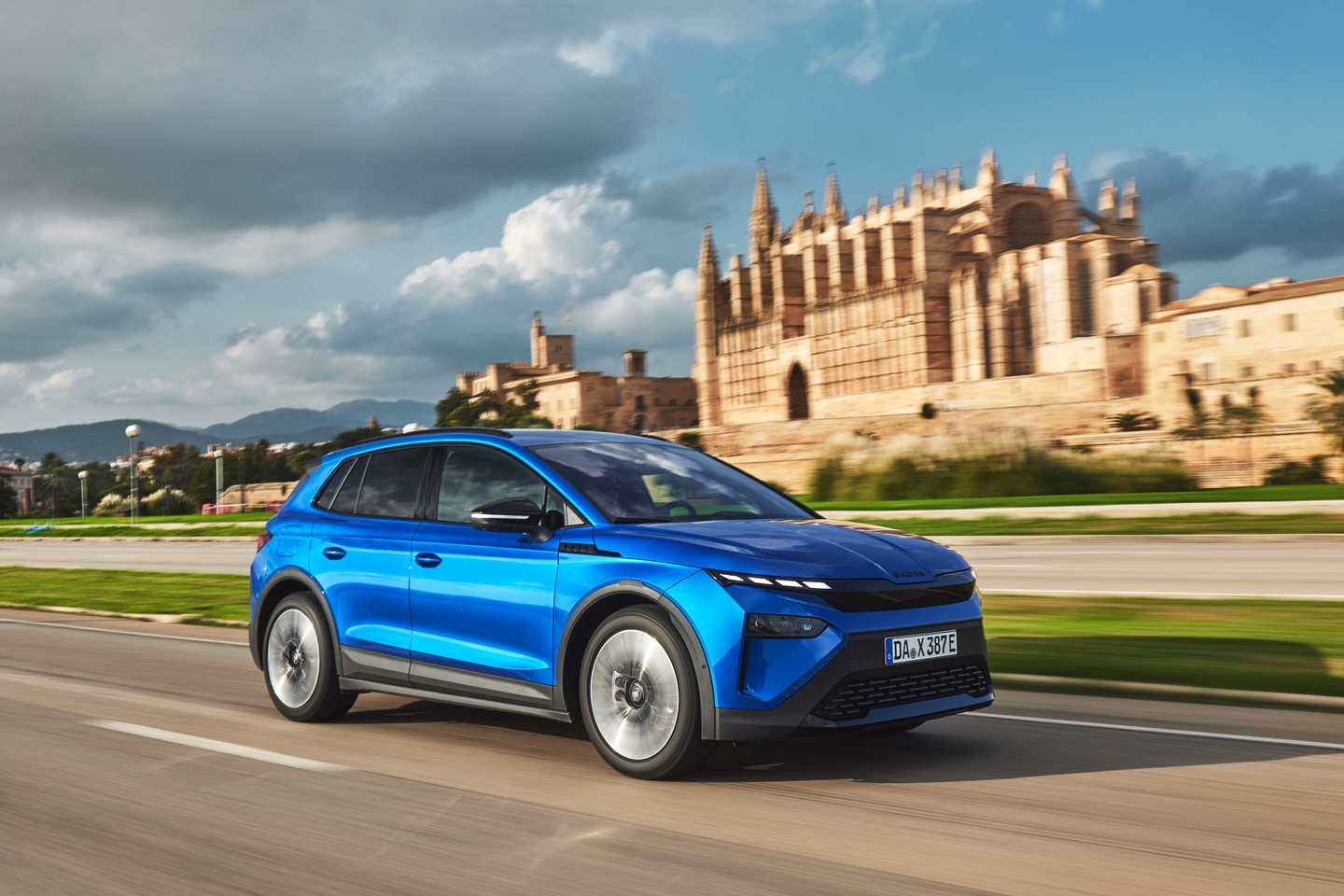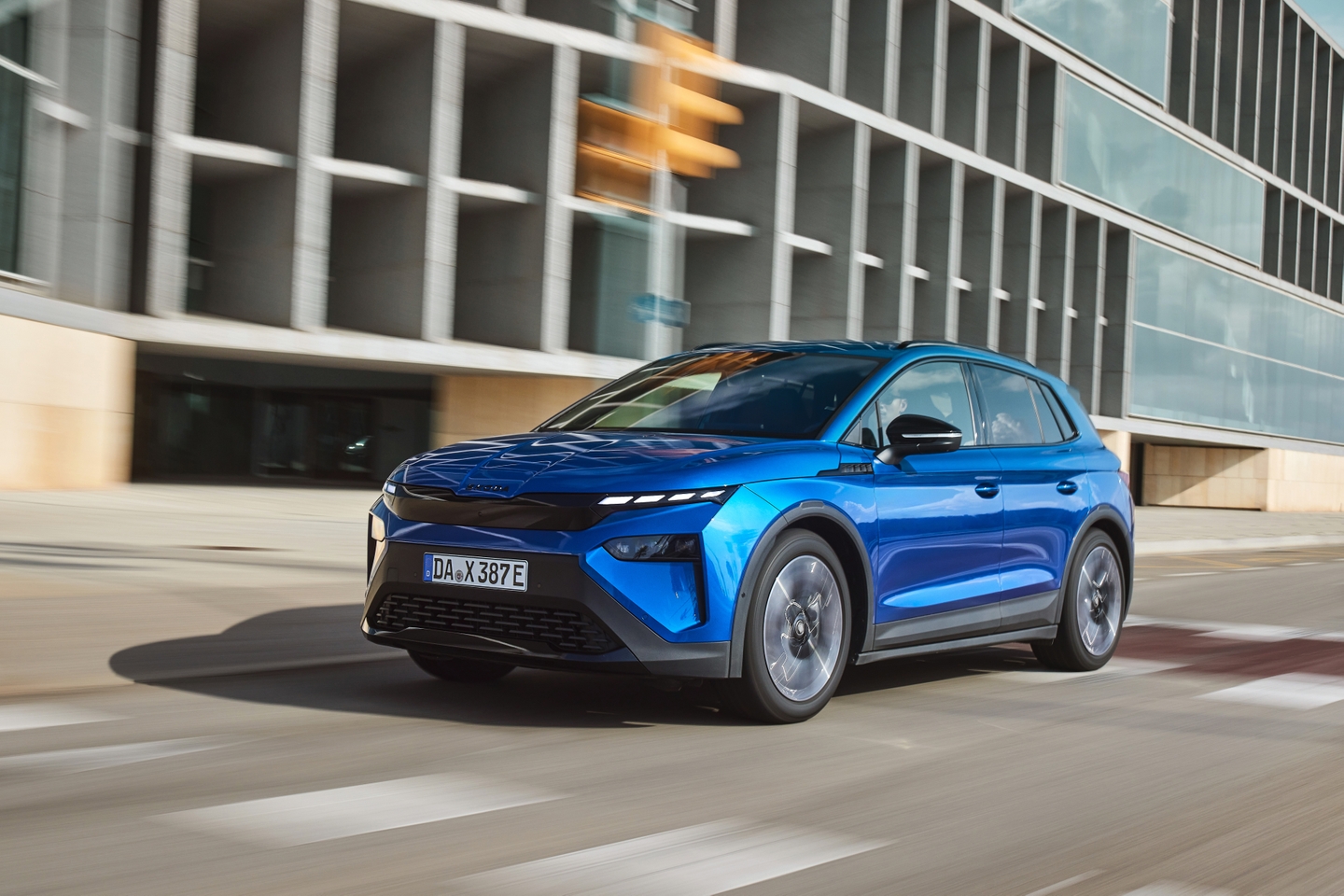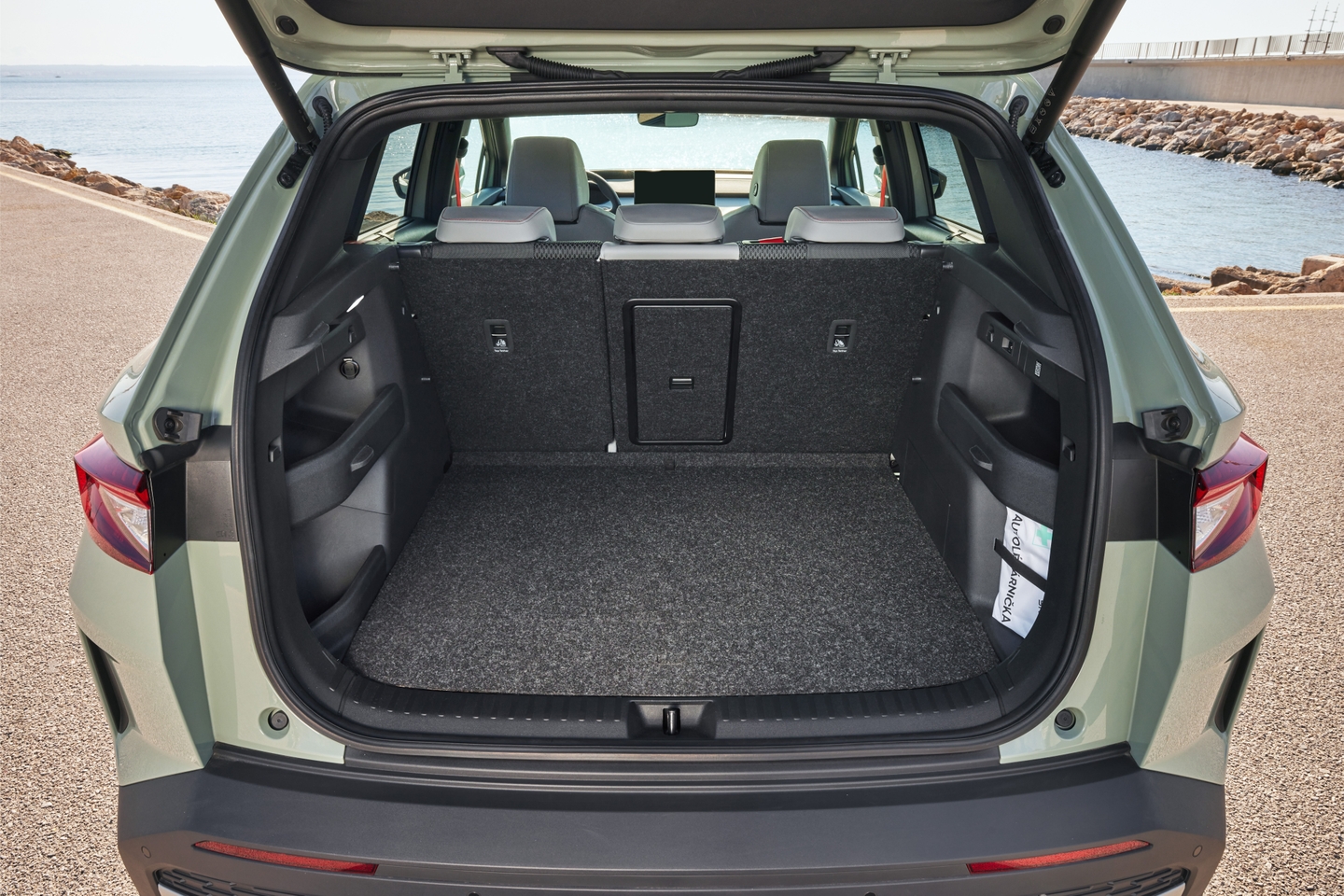








2025 Skoda Elroq review

The Skoda Elroq’s raison d’etre is in its name – it’s an Electric Karoq. Except… it technically isn’t anything to do with the Karoq – it’s a shrunk-down Skoda Enyaq that happens to match the popular Karoq in size.
It’s a rival to the Volvo EX30, Kia EV3 and Renault Scenic, and it's up there with the very best of them in terms of comfort and driving range, and leads the class in terms of cabin space.
- Comfortable to drive
- Spacious cabin
- Clever storage solutions
- Some models are over £40,000
- Some hard interior plastics in the back
- No physical climate controls
Should I buy a Skoda Elroq?
You can think of the Elroq as a slightly shorter and more affordable version of the popular Skoda Enyaq. Skoda hasn’t messed around – it wanted to give the Elroq the most spacious cabin possible, so the Elroq actually shares its wheelbase with the bigger Enyaq. The Elroq is 4.48m long – 20cm shorter than the Enyaq – but the vast majority of the shrinkage has come from the boot.
Inside, the Elroq is typical Skoda. You get a large 13-inch infotainment screen and small five-inch digital dashboard, but it's neat touches such as a cloth-lined dashboard and optional orange seatbelts that make the Elroq's interior feel warm and homely. The long wheelbase might sound like engineering guff, but the reality is that back-seat passengers get class-leading amounts of space to stretch out, while the 470-litre boot is big and packed with cubby holes and neat compartments – we love the net under the parcel shelf which is perfect for holding the charging cable.

On the outside, Skoda's thrown away its traditional winged phallus badge and instead simply stuck its name on the bonnet above a bold new front-end, with a wide stretch of black plastic behind which sit the sensors for the driver assistance systems. Skoda calls this the 'tech deck', but it serves another purpose – making the Elroq look far more modern than the rest of Skoda's range. It's a shame the Elroq's back end is just copied from the Enyaq, give or take a few taillight details.
The Elroq joins the Kia EV3 at the very top of the class for driving comfort. The Skoda irons out bumps really well and just rides properly, settling down quickly over hitting a pothole, rather than lurching around for 10 minutes as you'll find some other EVs doing. Sure, the Elroq is still a bit of a porker at 2.1 tonnes for the big 77kWh battery version, but unless you drive it on the door handles it never feels that heavy.
You'll get about 300 miles out of the 77kWh battery '85' version in the real world (Skoda claims 360 miles), and the 286hp rear-wheel-drive motor setup in that model is pretty punchy. The entry-level '50' version confusingly uses a 52kWh battery that's good for 230 miles on paper (expect under 200 miles in the real world), while the 60 model (with a 59kWh battery…) will supposedly do 250 miles.
Confusing numbers aside, it's one of the very best all-round family EVs on the market, combining space, technology, comfort and driving range.
Interior and technology
The Elroq's cabin is mostly lifted wholesale from the bigger Enyaq, and that's no bad thing. It's spacious, easy to use and has just the right amount of technology, with easy ways to turn off most of the annoying bongs you get from the driver assistance systems.

Depending on which interior 'suite' you pick, you'll get a dashboard covered in cloth or pleasingly soft artificial leather made from recycled plastic. There's a host of colour options too, including some blue-greys and a more traditional black setup in top-spec Sportline models.
Whichever version you pick, your Elroq's dashboard is dominated by a large 13-inch infotainment system running the latest version of Volkswagen Group's software, which is pleasingly quick to respond and bug-free in our testing. It has wireless CarPlay and Android Auto, and also includes some handy apps including one which will let you pay for car parks without leaving the comfort of your Elroq. A tap on a shortcut icon at the top of the screen will turn off the speed-limit warning chime, but sadly you're forced to use touchscreen controls to adjust the temperature. At least they're always visible at the bottom of the screen regardless of which menu you're in.
The small five-inch digital driver's display is clear and easy to read, and the optional head-up display is vast, colourful and uses augmented reality to show you when you're straying out of your lane.
A single wireless charging pad is also present on higher spec models – it's ventilated and can fast-charge at 15W. A pair of 45W USB-Cs is also on hand if you want to really bump up your phone’s charge before your next stop. There are also options to upgrade the stereo to a thumping Canton system, while memory seats and adjustable lumbar support are all available as options, which can easily push the price of the Elroq north of £40,000 and into luxury car tax territory.
Practicality
In keeping with Skoda tradition, the Elroq's about as practical as Mary Poppins on an IKEA binge. There are plenty of cubby spaces dotted about the cabin – though we're not sure why the pop-down bin by the driver's knee needs an electric button to operate it rather than an old-fashioned handle – and the door bins are generously sized. In short, you won't find yourself struggling to hide Haribo in the cabin.

Back-seat passengers get loads of headroom and kneeroom, although foot room under the driver's seat can get a bit tight if your chauffeur likes to have their seat as low as it'll go. There's okay space width-wise for a middle passenger, and the doors open nice and wide so child-seat fitting isn't a problem, helped by easy-to-find Isofix points nestled behind flip-down covers.
It's a little mean that Skoda doesn't line the rear doorbins with felt, considering it gives you the fluffy treatment up front.

The Elroq’s 470-litre boot is a decent shape and size, and Skoda’s invented a new ‘simply clever’ item – a strong net under the parcel shelf which can hold 3kg, and is designed so you don't need to empty your boot to access the cable if you hide it under the boot floor (where there is a space for it). The parcel shelf itself is adjustable, and can be dropped down to form a shelf in the middle of the boot. Hit the options list and Skoda will sell you more handy nets than a North Sea fisherman.

As on the Enyaq, the traditional Skoda ice scraper is tucked into the left-hand-side of the bootlid, and there’s an umbrella stowed in the driver’s door, and both are now made of more sustainable plastics.
Range and performance
The Elroq comes with three battery sizes from launch, with usable sizes of 52kWh (230-mile claimed range), 59kWh (250-mile claimed range) or 77kWh – with the top-spec battery being the one to pick if you want that 350-mile claimed range. All can charge from 10% to 80% in under 28 minutes, with fast charging of 175kW on top-spec models. A heat pump is optional on some higher spec models, and it'll set you back about £1,100 if you want to maximise range in seriously cold weather.

Performance varies depending on which battery you pick. The 52kWh battery model (called the Elroq 50) has 170hp and 310Nm of torque. Step up to the Elroq 60 with its 59kWh battery and you get a 204hp motor with the same torque figure. Top-spec Elroq 85 models get a 286hp motor with 545Nm of torque. A dual-motor version of the 85 will be available in Europe, but it's unlikely to come to the UK – we'll have to wait for a rumoured vRS model before we get a dual-motor Elroq.
Driving and comfort
The Elroq immediately impresses by being comfortable and easy to drive. There are no nasty surprises with sharp brake pedals or poor visibility – this is a car that's been honed to drive much like its comfy Enyaq sibling.
Most impressive is the way the Elroq's 2.1-tonne mass doesn't upset the suspension or send sharp jolts to your backside over bumpy roads. Nor does it float unnervingly over dips and bumps – it just drives like a normal combustion-engined car weighing 500kg less. The steering is light but direct, and in our Elroq 85 test car, acceleration out of corners is impressively strong.

We tried a car with the optional dynamic chassis control (only available on Sportline models), which lets you alter the suspension firmness on the move, but we wouldn't bother – the normal suspension setup is perfectly comfortable, and it's not the sort of car that you'll be using to chase Porsche 911s down a twisty road. That said, you can use the steering-wheel mounted paddles to adjust the regenerative braking effect, although it's a shame there's no one-pedal driving mode like in the Kia EV3.
Driving up and down the steep mountains of Mallorca wasn't the ideal test for the Elroq's efficiency, but we did achieve a reasonable 3.7 miles/kWh without trying, so getting to the 4.5 miles/kWh figure required to get 350 miles out of the battery doesn't seem too much of a stretch.






















































